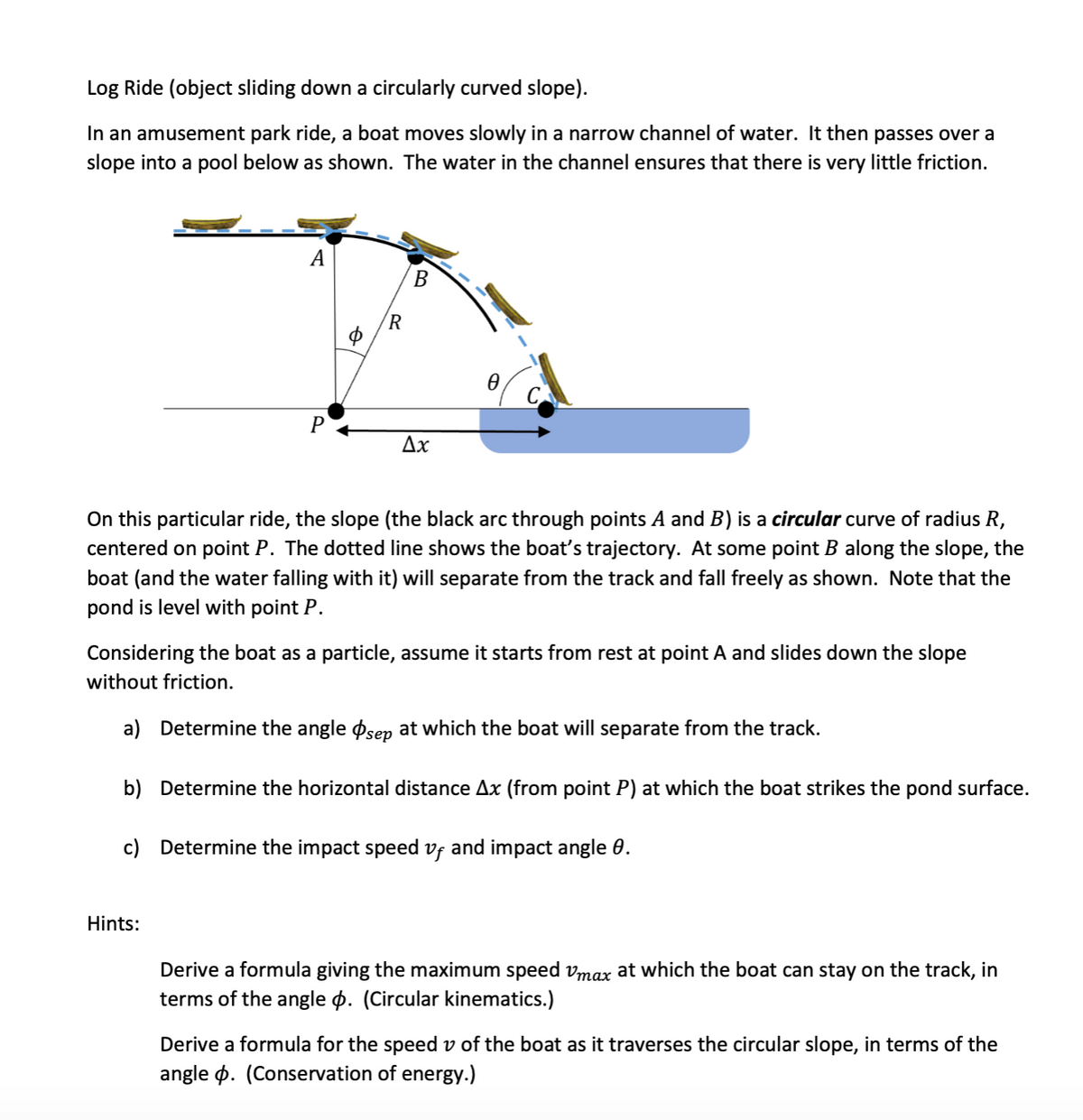In an amusement park ride, a boat moves slowly in a narrow channel of water. It then passes over a slope into a pool below as shown. The water in the channel ensures that there is very little friction. А В R P Ax On this particular ride, the slope (the black arc through points A and B) is a circular curve of radius R centered on point P. The dotted line shows the boat's trajectory. At some point B along the slope, t boat (and the water falling with it) will separate from the track and fall freely as shown. Note that th pond is level with point P. Considering the boat as a particle, assume it starts from rest at point A and slides down the slope without friction. a) Determine the angle psep at which the boat will separate from the track. b) Determine the horizontal distance Ax (from point P) at which the boat strikes the pond surfa c) Determine the impact speed vf and impact angle 0. Hints: Derive a formula giving the maximum speed Vmax at which the boat can stay on the track, in terms of the angle p. (Circular kinematics.) Derive a formula for the speed v of the boat as it traverses the circular slope, in terms of the angle p. (Conservation of energy.)
Displacement, Velocity and Acceleration
In classical mechanics, kinematics deals with the motion of a particle. It deals only with the position, velocity, acceleration, and displacement of a particle. It has no concern about the source of motion.
Linear Displacement
The term "displacement" refers to when something shifts away from its original "location," and "linear" refers to a straight line. As a result, “Linear Displacement” can be described as the movement of an object in a straight line along a single axis, for example, from side to side or up and down. Non-contact sensors such as LVDTs and other linear location sensors can calculate linear displacement. Non-contact sensors such as LVDTs and other linear location sensors can calculate linear displacement. Linear displacement is usually measured in millimeters or inches and may be positive or negative.
I got Part B wrong and wasn't sure where at. Could someone walk me through it?

Trending now
This is a popular solution!
Step by step
Solved in 5 steps with 7 images


